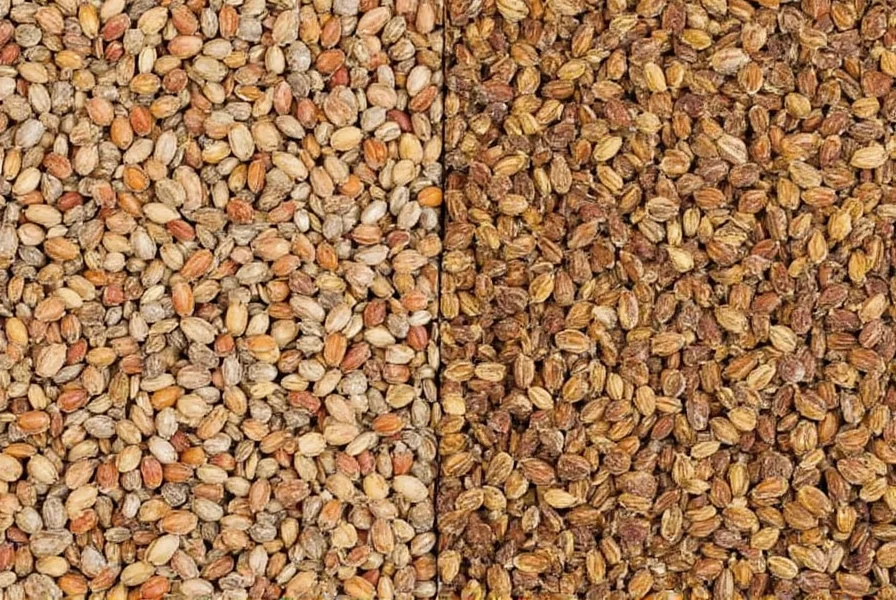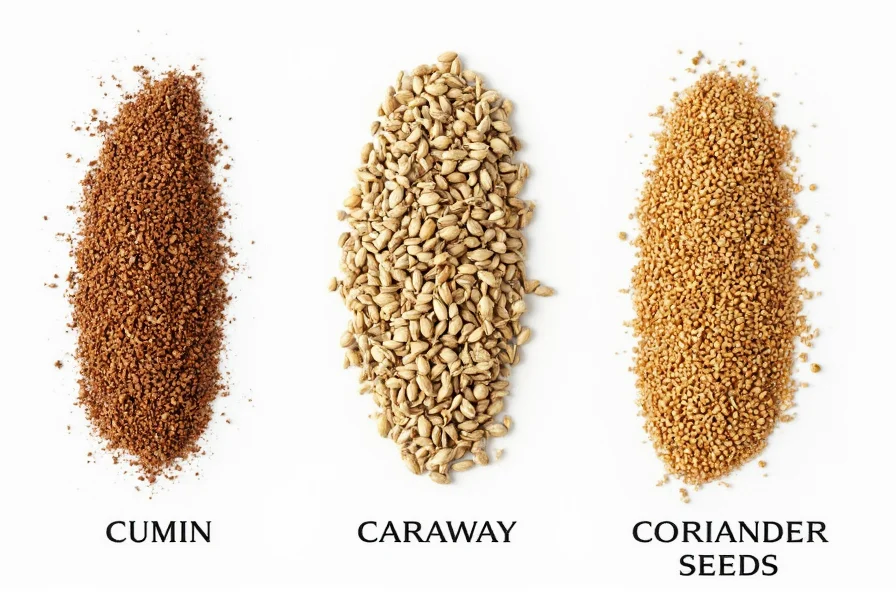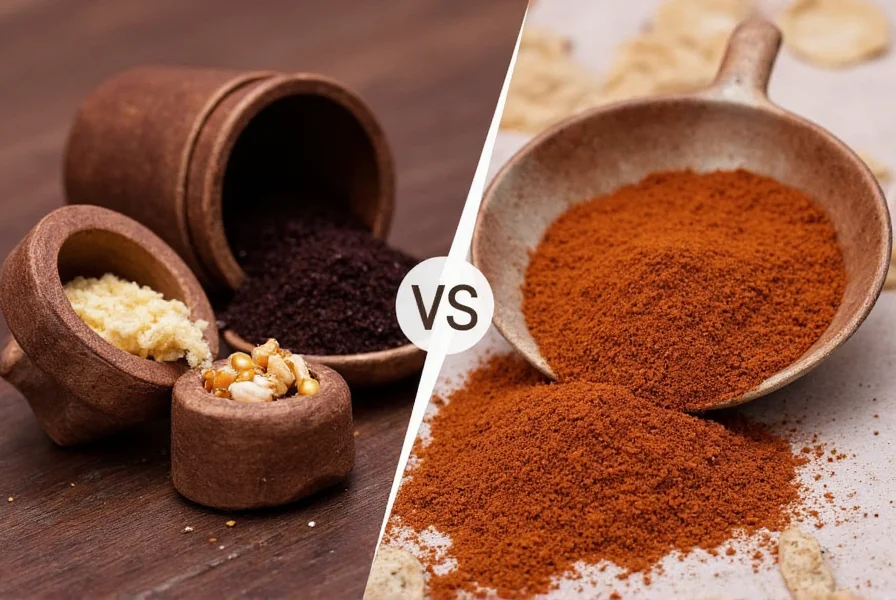Comino and cumin refer to the exact same spice—there is no difference between them. Comino is simply the Spanish and Italian word for cumin, which comes from the botanical name Cuminum cyminum. When recipes or spice labels use “comino,” they are referring to standard cumin seeds or ground cumin used globally in cuisines from Mexico to India.
Many home cooks encounter confusion when they see “comino” on a Spanish-language recipe or spice container and wonder if it’s a different ingredient than the “cumin” they’ve used before. This linguistic misunderstanding can lead to unnecessary trips to specialty stores or recipe substitutions when none are needed.
Understanding the Language Behind the Spice Name
The word “cumin” entered English from the Arabic “kammūn,” while “comino” developed as the term in Spanish, Italian, and Portuguese. This pattern of spice names changing across languages is common:
| Language | Term for Cumin | Literal Translation |
|---|---|---|
| English | Cumin | From Arabic “kammūn” |
| Spanish | Comino | Direct linguistic evolution |
| Italian | Comino | Same root as Spanish |
| French | Cumin | Closer to English version |
| Hindi | Jeera | Native Indian term |
This linguistic variation explains why you might see “comino en polvo” (ground cumin) on a Mexican spice jar while your standard spice rack says “cumin.” The ingredient inside is identical.

Botanical Identity and Flavor Profile
Cumin (Cuminum cyminum) is a flowering plant in the Apiaceae family, native to the Eastern Mediterranean and South Asia. The spice comes from the plant’s dried seeds, which feature a distinctive:
- Aroma: Earthy, warm, and slightly peppery with citrus notes
- Taste: Intensely aromatic with a nutty undertone and subtle bitterness
- Appearance: Small, oblong seeds with nine ridges and white threads
Whether labeled as cumin or comino, the spice maintains these exact characteristics. Professional chefs confirm there’s no variation in flavor, aroma, or culinary application based solely on the name used.
Global Culinary Applications
Cumin/comino appears in diverse world cuisines, though preparation methods vary:
- Mexican cuisine: Essential in chili powders, adobos, and taco seasoning (labeled as “comino”)
- Indian cuisine: Used whole in tempering or ground in curry blends (called “jeera”)
- Middle Eastern dishes: Key component in falafel, hummus, and baharat spice mixtures
- Mediterranean cooking: Features in Spanish chorizo and Italian sausages
When following international recipes, understanding these naming conventions prevents unnecessary substitutions. That Spanish paella recipe calling for “comino” needs standard cumin from your spice cabinet.
Common Confusions with Similar-Sounding Spices
The comino vs cumin confusion sometimes overlaps with misunderstandings about other spices:
- Caraway: Often confused due to similar appearance but has a distinctly different anise-like flavor
- Coriander: Completely different spice (coriander seeds come from cilantro plant)
- Curry powder: A blend that often contains cumin but isn’t a single spice
Unlike these genuinely different spices, comino and cumin represent identical products with only linguistic variation.

Practical Buying and Usage Tips
When working with cumin/comino in your kitchen:
- Check labels carefully: Spanish-language products will say “comino,” but the ingredient is identical
- Toast for maximum flavor: Dry-toast whole seeds before grinding to enhance aromatic compounds
- Storage matters: Keep in airtight container away from light; whole seeds stay fresh 4x longer than ground
- Measurement precision: 1 teaspoon ground cumin = 1.5 teaspoons whole seeds (toasted and ground)
Professional chefs recommend keeping whole cumin seeds rather than pre-ground when possible, as the essential oils that provide cumin’s distinctive flavor degrade quickly after grinding. This advice applies regardless of whether your container says “cumin” or “comino.”
Why the Confusion Persists
The comino vs cumin misunderstanding continues for several practical reasons:
- Language barriers: Cooks encountering Spanish recipes may not recognize “comino” as familiar cumin
- Marketing practices: Some specialty stores list “comino” as a separate product to suggest authenticity
- Regional variations: In some Latin American countries, “comino” might refer to a specific cumin blend
However, pure cumin/comino remains botanically and culinarily identical across these naming conventions. The key is checking ingredient lists rather than relying solely on the front-label name.
FAQ Section
Is comino stronger than cumin?
No, comino and cumin have identical strength and flavor profiles. The name difference reflects language variation only—not any difference in potency, quality, or characteristics of the spice itself.
Can I substitute cumin for comino in recipes?
Yes, you can use them interchangeably in a 1:1 ratio. Since comino is simply the Spanish term for cumin, no substitution is actually needed—they are the exact same spice.
Why do some recipes specify comino instead of cumin?
Recipes use “comino” when written in Spanish or created by Spanish-speaking chefs to maintain linguistic authenticity. This doesn't indicate a different ingredient, just reflects the creator's language preference.
Does comino have different health benefits than cumin?
No, comino and cumin share identical nutritional profiles and health benefits since they're the same spice. Both contain antioxidants, support digestion, and may help regulate blood sugar levels.
Is there a difference between Mexican comino and regular cumin?
No authentic difference exists. Some Mexican markets may sell cumin labeled as “comino,” but it's the same Cuminum cyminum spice. Any flavor variation would come from growing conditions or freshness, not from being a different spice.











 浙公网安备
33010002000092号
浙公网安备
33010002000092号 浙B2-20120091-4
浙B2-20120091-4